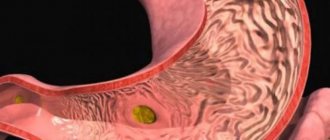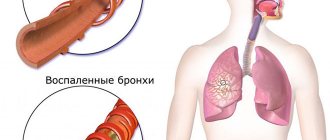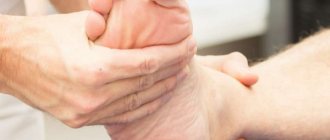Anemia is a condition characterized by a decrease in the level of hemoglobin in the blood. It is not a disease in itself, but may indicate the presence of systemic disorders in the body, including serious diseases. But most often, anemia is associated with nutritional errors, problems in metabolism, when the necessary microelements are not absorbed properly. Therefore, in many cases, the situation can be resolved by simple changes in lifestyle and diet, and anemia can be cured at home using folk remedies.
Treatment of anemia with folk remedies is possible under the supervision of a doctor.
Causes of anemia
What causes anemia (anemia)?
If there are no obvious signs of blood loss, a strict diet (vegetarianism, or the desire for model standards of “beauty”), and a blood test shows the presence of anemia, then it is necessary to look for the cause. A common cause of anemia is insufficient intake of nutrients from food, malabsorption in the intestine (atrophic gastritis, parasites, surgical interventions), chronic diseases, taking serious drug therapy, as well as increased need (pregnancy, childhood, hemodialysis, neoplasms).
Diagnosis of anemia
To diagnose anemia
a number of laboratory tests are required:
- detailed blood test,
- iron level
- total iron binding capacity of serum,
- level of vitamin B12, folic acid in serum and red blood cells.
Additional research may also be required
- determination of the content of free and bound bilirubin in blood serum and urine,
- performing a Coombs test.
If the cause of anemia (anemia) remains not fully understood, a bone marrow biopsy (sternal puncture, trephine biopsy) may be required.
Types of anemia
Types of anemia (anemia).
There are several classifications of anemia, including the reasons that cause them.
According to the reasons, the following types of anemia and anemia are distinguished:
posthemorrhagic, hemolytic and developing as a result of impaired blood formation (deficient, hypoaplastic).
Posthemorrhagic anemiaPosthemorrhagic anemia – loss of red blood cells due to acute or chronic blood loss (frequent and heavy nasal, hemorrhoidal, menstrual bleeding, pathology of the gastrointestinal tract, etc.). |
Hemolytic anemiaHemolytic anemia develops as a result of a shortening of the life of red blood cells (increased destruction of red blood cells - hemolysis). In addition to a decrease in hemoglobin levels, an increased level of blood bilirubin will be recorded. |
Deficiency anemiaDeficiency anemia caused by a lack of iron, vitamins (B12, folic acid) or other microelements involved in hematopoiesis. |
Hypoplastic anemiaHypoplastic anemia – the most severe type of anemia associated with bone marrow failure. They can be hereditary and acquired. |
Doctors also use a number of working classifications of anemia in practice :
| According to serum iron content: normosideremic anemia (iron content in the blood serum is normal 9.0 - 31.3 µmol/l), hyposideraemic (iron content is reduced to less than 9.0 µmol/l) and hypersideraemic; |
| By color index (CP)normochromic (CP - 0.8-1.05) anemia, hyperchromic (CP>1.05) and hypochromic (CP |
| Based on the average diameter of red blood cells normocytic anemia (SDE = 7.2 - 8.0 microns), microcytic (SDE), macrocytic (SDE > 8.0 microns) and megaloblastic (SDE > 9.5 microns). |
Norm of hemoglobin in the blood of women by age
As women age, hormonal changes occur in their bodies, which also affect the level of hemoglobin (its norm also changes, according to the table that doctors consult). In addition, during the month, its indicators may also differ.
Let's figure out what acceptable values of this protein correspond to age-related changes. Firstly, it is worth saying that hemoglobin serves to transport oxygen from the lungs to the cells of the whole body. The lack of this enzyme contributes to poor oxygen saturation of cells, and as a result, the development of anemia and other diseases. Sometimes the question arises: why do you feel dizzy at normal blood pressure? The answer may be a decreased hemoglobin level.
For women, it is extremely important to monitor the concentration of this protein. After all, blood loss during menstruation reduces its content
Let's first find out what concentration is considered sufficient for each age.
The norm of hemoglobin in women after 60 years is from 114 to 160 grams per liter of blood
. It should be taken into account that this concentration should be constant throughout the month, since at this age there is no blood loss caused by menstruation.
The norm for women 50 years old is from 112 to 152 grams per liter
, and with age the upper limit of hemoglobin concentration increases. This is due to the fact that the blood of older people is slightly thicker than that of younger people.
The hemoglobin norm in women after 40 years ranges from 112 to 150 grams per liter
. Its decrease is due to the onset of menopause and hormonal changes in the body.
During pregnancy, when significant changes occur in the expectant mother's body, especially in the hormonal area, the amount of hemoglobin in the blood also changes. This is due to the fact that the volume of blood circulating through the system increases, it becomes thinner, and accordingly the protein concentration decreases. This is also due to fluid retention in the body, and as a result, the blood thins. This process is called physiological hemomodelling. If in normal conditions the level should be in the range of 120-130 grams per liter, then during pregnancy it is acceptable to reduce it to 110 grams. This value is not considered low.
Pregnant women need to pay attention to this blood parameter much more than others. After all, not only her own health, but also the nutrition and development of the unborn baby depends on the mother’s hemoglobin concentration. That is why the antenatal clinic strictly monitors that pregnant women regularly undergo blood tests. If the content of this protein is below 110, then this is considered a pathology, and the woman needs to take medications to increase it.
With an increased number or shape of red blood cells, an increase in the level of hemoglobin in the blood is observed. This would seem to allow more oxygen to flow from the lungs to other organs. However, this is not the case.
What are the symptoms of anemia (anemia)?
Anemia leads to a pronounced decrease in performance in both men and women, and the risk of mortality sharply increases, including from myocardial infarction, stroke, coronary heart disease, etc. Almost every person can develop deficiency anemia. What are the symptoms of anemia (anemia)
? As a rule, attention is drawn to:
- pale skin,
- increased fatigue,
- dyspnea,
- drowsiness,
- fainting,
- cardiopalmus.
May be:
- hair loss,
- gum problems,
- perversion of taste (desire to eat chalk, aversion to certain foods).
Premature babies, children under 1 year of age, pregnant and lactating women will have iron deficiency
in the body due to its increased need (iron deficiency anemia). In pregnant and breastfeeding women, the symptoms of anemia are the same as in ordinary people.
How to suspect anemia in a child?
When should one suspect anemia (anemia) in a child?
If your baby has:
- poor appetite
- no interest in games
- cold and damp palms and feet,
- the child is often sick for a long time, is capricious,
It is necessary to undergo general clinical tests as soon as possible (complete blood count, feces for worm eggs, general urine test) and consult a pediatrician.
First mild degree
Mild anemia is quite difficult to determine visually, since the person looks healthy at first glance. Testing is required to make a diagnosis. The hemoglobin level is 90-110 g/l, and this indicator is often typical only due to physical activity.
Important information: How to treat hypoplastic (anaplastic) anemia and its symptoms
Diagnosis of first degree anemia is an important step, since proper treatment gives good results. You should not wait for the transition to a more severe form.
Symptoms:
- the appearance of shortness of breath during physical exertion;
- increased fatigue;
- frequent dizziness;
- headache;
- noise in ears;
- fainting (especially when suddenly getting out of bed);
- cardiopalmus.
To improve your general condition and normalize blood levels, you need to pay attention to your lifestyle and diet. Natural juices (apple, carrot, beetroot) are useful for hematopoiesis, but after preparation, a glass of beetroot drink should be placed in the refrigerator for 2-3 hours to get rid of harmful fumes.
To treat anemia, you can prepare a vitamin mixture from prunes, figs, raisins, and dates. Scroll the ingredients through a meat grinder, mix thoroughly, adding a small amount of lemon and honey. Dried fruits enrich the body with useful microelements, after which the composition of the blood is restored.
How to treat anemia
Diagnosis and treatment of anemia (anemia)
should be carried out by a specialist (therapist, in severe cases - a hematologist). After carrying out all the necessary diagnostic measures, the nature of the anemia is determined, its cause is eliminated, if possible, and drug correction is prescribed. These can be iron supplements, folic acid, vitamin B12. In more severe cases, blood transfusions and hospital treatment may be required.
Treatment of anemia (anemia) with folk remedies - the risk is unjustified
Treatment of anemia (anemia) with folk remedies
is not the main method; there are always risks of aggravating the condition. Therefore, you should not take such responsibility for your health, undergo a full examination by a specialist and receive rational recommendations.
| Have questions? Ask them to the doctor. Online. For free. TO THE THERAPIST |
Prevention of anemia
Prevention of anemia (anemia) involves correcting nutrition. Suffering from anemia (anemia)
You should include the following products in your diet:
- foods rich in iron - fruits, green vegetables, legumes, cereal bread, lean meat, liver, salad greens, parsley.
Try to follow the rules of personal hygiene to avoid parasitic infestation - wash your hands as often as possible, especially after visiting public places and before eating. Lead a healthy lifestyle, walk more in the fresh air, away from highways. If it is necessary to work with insecticides, chemical agents, poisonous and toxic substances, use personal protective equipment (respirator, gloves).
Author: general practitioner, rheumatologist Galina Valerievna Danilova
Features of treatment
Treatment of anemia in women is carried out after excluding other pathologies (leukemia, congenital anomalies, hemophilia). Complex therapy includes:
- Eliminating the cause of anemia. Treatment of existing inflammatory diseases, cessation of smoking and alcoholic beverages, avoidance of contact with chemicals, and treatment of helminth infections may be necessary.
- Taking medications. Iron deficiency anemia should be treated with iron supplements and complex products with vitamins and microelements. Ferro-Folgamma, Sorbifer Durules, Ferrum Lek, Ferlatum, Aktiferrin and Maltofer are used. For B12 and folate deficiency anemia, Folic acid and Cyanocobalamin are prescribed. Drugs such as Mamifol and Folacin are often used. For aplastic anemia, Epostim and Erythrostim are effective. For anemia of autoimmune etiology, corticosteroids and immunosuppressants are used.
- Strict diet. Sick women need to avoid foods that impede the absorption and absorption of iron (black tea, soy, rice, milk). You need to eat foods rich in folic acid, iron, vitamin C and cobalamins more often. Red meat, liver, vegetables, fruits, yeast, eggs and greens are beneficial. It is necessary to diversify your diet as much as possible. This will ensure that the body receives the necessary substances.
- Maintaining a healthy lifestyle.
- Red blood cell transfusion. Required for severe blood loss and low hemoglobin levels.
- Administration of infusion agents (hypertonic solutions, electrolytes, glucose solution with ascorbic acid). Effective for acute posthemorrhagic anemia in women.
- Correction of the heart, kidneys and liver. For this purpose, symptomatic drugs are prescribed.
- Removal of the spleen (splenectomy). This operation is most effective for hemolytic anemia with microspherocytosis.
- Forced diuresis. Required for anemia of toxic nature.
Important information: How to treat beta thalassemia minor











